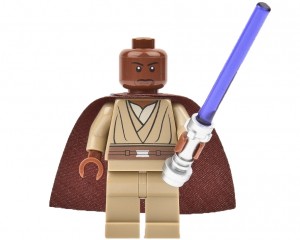On May 1, 2014, I attended Derek Johnson’s lecture, “My Hero?: The Practices and Politics of Sharing Worlds in Marvel’s Media Franchises” presented by the University of California at Irvine Humanities Collective. Johnson is a professor of Media and Cultural Studies at the University of Wisconsin-Madison who researches identity and hierarchy in the production of entertainment media.
Johnson spoke about the industry of cultural production and specifically the franchise culture of Marvel. He situates his work in fan and cultural studies, as well as childhood studies. (For those readers considering a career in comics academe, these are some of the fields of study that might fit your interests.)
The talk opened with a clip of “The Avengers European Premiere Interview” with Marvel representative Kevin Feige. Johnson used this clip as an example of the narrative spin on trade stories and the managed self-disclosure provided by industry spokespersons. Treading carefully around the issue of studio rights to characters, Feige points to Thor on a poster behind him and says “there are a lot more Avengers where that came from.”
The issue of shared rights over characters is perhaps most salient ** SPOILERS if you didn’t stay to the end of Captain America: The Winter Soldier** in the recent reveal of Quicksilver and Scarlet Witch after the credits of Captain America: The Winter Soldier (hey, I warned you).
Quicksilver is appearing in two upcoming films: Avengers: Age of Ultron and X-Men: Days of Future Past. The Avengers film series is controlled by Marvel Studios, and the X-Men films are put out by 20th Century Fox, but both can make claims on characters that overlap in various comic book universes–and sometimes a character is played by two different actors, as in the case of Quicksilver. Such overlaps can be one of the challenges of franchising. Such (vaguely or not-so-vaguely) competitive moments may be where rhetoric around character “ownership” and intellectual property rights are most salient.
Johnson views this struggle over control and authority as an economic and creative debate, but also a site of conflict over legitimacy in cultural production. Claiming the characters is a franchising strategy, but it is also an assertion of power and authority in the media industry.
He urges us to consider franchising at three levels: first, as a site of cultural tension in the broader discourse around popular culture; secondly, as a creative and economic struggle within Marvel; and thirdly, as a battle waged through stories and identities that are legitimized through trade narratives, such as Feige’s interview.
Challenging the common sense politics—such as Feige’s assertion that “We’re Marvel. We own all the characters”—of media franchising (beyond the general sense of sequels, spin-offs, and lunch box licensing) allows us to rethink the processes of distribution and production (and McDonaldization) in US culture.
(Whenever someone mentions McDonald’s franchising, I am reminded of Mitch Hedberg’s joke: “Every McDonald’s commercial ends the same way: Prices and participation may vary. I wanna open a McDonald’s and not participate in anything. I wanna be a stubborn McDonald’s owner. ‘Cheeseburgers? Nope! We got spaghetti and blankets.’”)
 Even Sesame Street has commented on the ad nauseum process of cultural production and consumption, in their parody of The Hunger Games. The idea of franchising, and the authority behind strategic franchising, leads to specific consequences for media production. For example, Her Universe, which supplies clothing and accessories for female scifi fans, draws on the tradition of Disney princess fandom, which is structured along gender lines, thereby reproducing identity along those same lines.
Even Sesame Street has commented on the ad nauseum process of cultural production and consumption, in their parody of The Hunger Games. The idea of franchising, and the authority behind strategic franchising, leads to specific consequences for media production. For example, Her Universe, which supplies clothing and accessories for female scifi fans, draws on the tradition of Disney princess fandom, which is structured along gender lines, thereby reproducing identity along those same lines.
Likewise, LEGO has claimed that the homogenized yellow heads of LEGO minifigurines are “universal” and “race-less,” claiming that their minifigurines derive from a pre-racial childhood. However, Star Wars LEGO minifigurines tend to replicate the features of the actors portraying the characters in the film, from facial hair to skin tone.
With franchising, LEGO can claim that Disney demanded this character likeness, thereby disavowing LEGO’s authority over the minifigurines and preserving the LEGO assertion of “race-less-ness,” despite evidence to the contrary.
These decisions about minifigurines bring up larger questions of agency, consent for collaboration, and power (often couched as “worthiness”) in the discourse of media production and franchise agreements.
While economic relationships can be expressed in common sense trade stories–such as Disney choosing to team with LEGO for franchising minifigurines for however much money–questions about the political economy of creative conditions underlie this rhetoric. That is to say, not all franchise productions are created equal. Some products, spin-offs, sequels, toys, lunch boxes, television series, and trading card lines fail, in the sense that they fail to become popular and/or that they bankrupt a company. Negotiating cross-platform success stories is part of successful franchising, a process that is enabled (or hampered) by a variety of actors. The term “actors” applies in the sense of both cultural agents and the people hired to perform as the characters in specific universes.
In particular, Marvel seems to have woven a compelling meta-narrative in the industry regarding the company’s role in controlling the franchise process. Marvel asserts authority over intellectual property in a variety of ways: through paternalist rhetoric (for example, referring to the characters as “our children”); as a dutiful hero (“with great power comes great responsibility,” and Marvel has an obligation to the fan base); and as a trusted teacher or mentor (in that Marvel executives can dictate what will happen with the characters, and creators with authority can endow other creators with legitimacy through their supervision). Despite the often contradictory existence of characters–who can be dead in one universe or married with children who become relevant to the plot trajectory in another–there can be policing of the so-called “canon,” with fan fiction and other scripts falling outside the scope of that definition. (Or, in some cases, with fan fiction becoming a part of the canon, often with little or no reimbursement or credit given to the original creators.)
The respondent, Joe LeFavi, identifies as “obnoxiously passionate” about entertainment. He is a brand consultant in the entertainment industry. He generally agreed with Johnson’s analysis of the industrial narratives around his (LeFavi’s) line of work and raised further questions regarding the evolving dialogue around power in franchising, particularly the monetization of fan fiction, input, and ideas that can be appropriated (or, if you prefer, “stolen”) by large corporations.
There was a lively Q&A section regarding systems of production, play, gender roles in the media, and “fanboy” identity. Overall, the lecture was a fascinating glimpse into the “shifting terrain of struggle in which media institutions, workers, and users alike imagine new logics, role, and identities of cultural production.”
Further reading: “Author Discusses Media Franchising” by Brendan Yu, May 6, 2014


